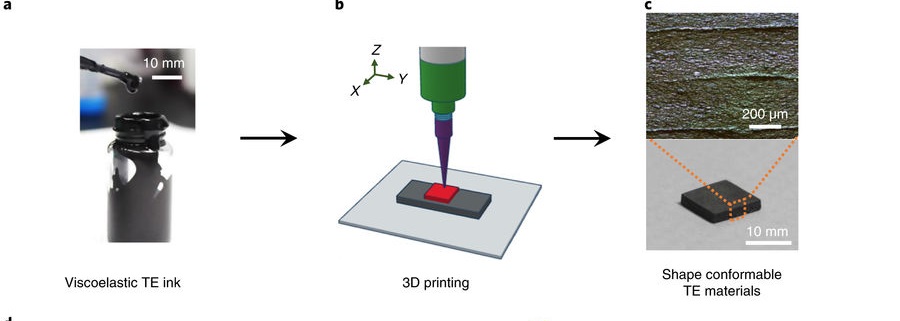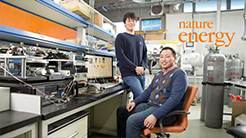A new study, affiliated with UNIST has presented a new technique that is capable of converting waste heat energy from exhaust pipes in automotive combustion systems into useful electricity.
This breakthrough has been led by Professor Jae Sung Son in the School of Materials Science and Engineering at UNIST in collaboration with Professor Beomjin Kwon and Professor William P. King at University of Illinois Urbana-Champaign, Professor Han Gi Chae in the School of Materials Science and Engineering at UNIST, Dr. Kyung Tae Kim at Korea Institute of Materials Science, and Bong-Seo Kim and Dr. Ji Eun Lee at Korea Electrotechnology Research Institute.

Thermoelectric (TE) generators have attracted considerable interest due to their potential to convert residual heat energy into electrical energy. The power output of TE generators (TEGs) is determined from the heat transferred from heat sources and the energy conversion efficiency of the TE materials. However, despite recent improvements in the efficiency of TE materials, the geometry of TEGs has been largely restricted to a typical planar layout of n-type and p-type TE materials, yielding a low power output owing to ineffective thermal contacts between the TEG and curved heat sources such as exhaust pipes in automotive combustion systems.
In the study, the research team has developed an extrusion-based three-dimensional printing method to produce TE materials and generators conformable to perfectly fit heat sources, using all-inorganic Bi2Te3-based inks. Herein, all-inorganic viscoelastic inks were synthesized using Sb2Te3 chalcogenidometallate ions as inorganic binders for Bi2Te3-based particles. These inks enabled the fabrication of TE materials with different geometries showing high TE performances, as indicated by ZT values of 0.6 (n-type) and 0.9 (p-type) materials.
The phenomenon involving an interconversion of heat and electrical energy may be termed as Thermoelectric Effect. The residual thermal energy can be, then, converted into usable electricity using TEGs. Because TEGs are in direct contact with heat sources such as pipes or flat surfaces, conventional ones were not very thermally effective. Their rectangular shape makes it impossible to completely cover the heat source.
In this study, the research team has also proposed a cylindrical TEG design conformal to tubular heat sources, made of 3D-printed TE half rings. They, then, manually integrated the 3D-printed TE half-rings with Cu electrodes on an alumina pipe using Ag epoxy instead of solders, resulting in a high contact resistance.
According to the research team, their 3D printing approach allows TEGs that can be easily integrated into heat sources, such as pipes or electronic components, to be designed, and could be applied to Peltier modules to enhance the cooling efficiency. The cost-effective manufacturing of TEGs into high-performance heat exchanger structures, compared with conventional manufacturing of planar TE modules by multistep ingot synthesis, metallization, dicing and module assembly is also another advantage of this 3D printing process, the research team notes.
“Our thermoelectric 3D printing technology has overcome the limits of previous thermoelectric materials and is expected to be applied in various ways,” says Professor Son.
This study has been supported by the the R&D Convergence Program of National Research Council of Science and Technology (NST), and the Center for Advanced Meta-Materials (CAMM) as a Global Frontier Project, Leading Foreign Research Institute Recruitment Program, the Nano Material Technology Development Program, and individual research program through the National Research Foundation of Korea (NRF) funded by the Ministry of Science and ICT (MSIT) of Republic of Korea.
Journal Reference
Fredrick Kim, et al., “3D printing of shape-conformable thermoelectric materials using all-inorganic Bi2Te3-based inks”, Nature Energy, (2018).












